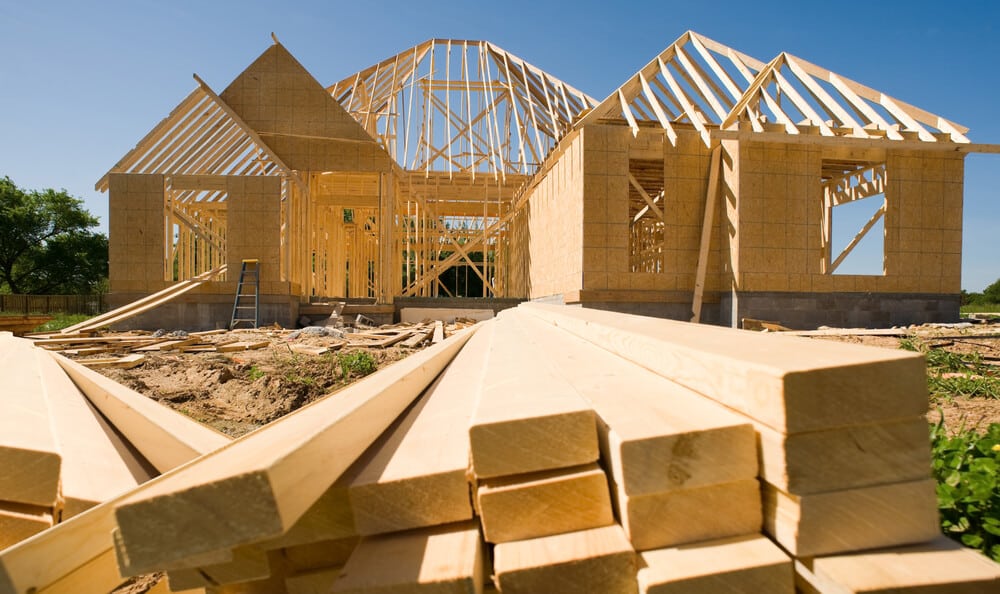
Let’s blame the customers’ high-quality standards.
We call this tolerances.
Zig Ziglar would call this “stinkin thinkin!”
It is so easy for construction managers to claim that the customers’ standards are just too high. As production builders, we sometimes specify inferior paint, then admonish our customers who see the blemishes. More to the point, during the construction cycle, trade contractors can rub against walls, marking them with dirt. Our cleaning crews arrive to get the home ready for closing. They try to clean the walls and damage the paint finish. Imagine a paint that doesn’t stand up to cleaning.
Setting quality requirements in home construction is critical. And yes, there are some materials that require tolerances be set.
Every home is subject to building codes and regulations, which can provide minimum standards for construction. Complying with these standards ensures that your home is safe and structurally sound. But we must go further. Codes and regulations do not specify the components that a builder should use.
The materials used in the construction of a home impact durability and longevity. Materials should be chosen based on their performance, durability, and sustainability. We often speak of high quality when describing different products. But, if you understand that quality is conformance to requirements, you begin to see that high quality is a misnomer. High performance is more accurate.
Table of Contents
Why Does Quality Construction Matter?

The quality of the workmanship is crucial to the overall quality of the home. Skilled and experienced tradespeople should be used to ensure that the work is done correctly and to a high standard. This is a real challenge in today’s environment.
Skilled and experienced tradespeople are constantly declining. However, in the commercial construction sector, suppliers and manufacturers continue to improve the performance of the components used in assembly. Look at any manufacturing business where robotics replaces handwork. Sure, robots lower employee payroll. But improved engineering raises the performance to a higher standard. Such performance improvement happens at too slow a pace in residential construction.
The design of the home should be functional, efficient, and aesthetically pleasing. Good design can improve the livability and value of a home. The better design provides a builder with a competitive advantage. But building a design for the first time invites challenges. To get it right the first time, your construction team must make time to understand the installation process and define the performance standard.
Energy efficiency is becoming increasingly important in home construction. A home that is designed and built to be energy-efficient can reduce energy bills, improve indoor comfort, and have a positive impact on the environment.
Safety features, such as smoke detectors, carbon monoxide detectors, and fire extinguishers, should be installed in the home to protect the occupants from harm. Today, such devices are standard in many municipalities. It took code requirements to improve the safety features of homes. But we can do more.
These are just a few examples of the quality requirements that should be considered in home construction. It is important to work with a reputable builder who has experience in building high-quality homes and who can advise you on the specific requirements of your project.
Residential Construction Quality Standards

In residential construction, it’s not unusual for your client to have unrealistic quality standards. That’s why you need to establish the standard ahead of time, using the residential construction performance guidelines.
We received this note from a contractor asking about quality standards.
Hi Michael and Devon,
First, I want to thank you both so much for the two-day intensive workshop that you put on a little while back. It was fabulous, and I reference it at least once a day with my team in one form or another.
A quick question for you both. In our contract, we currently reference the residential construction performance guidelines fifth edition from the national association of homebuilders as a guideline for our punch list items. What verbiage can we use in our contract for items that do not fall within this guidebook?
For example, currently, we are working with a client, and the client has said that the bead of silicone on the vanity countertop where it meets the tile backsplash is too wide and is requesting to have it redone. Naturally, we aim to please, and we want a happy client; however, there are limitations to anything, and in our efforts to try to create a tight bead of silicone during the tooling process, it widens.
This is a minor issue, but it got me thinking about specific verbiage in our contract to include areas outside of the performance guidelines, especially when it pertains to the client’s opinion of how something should look, as well as a way to prevent us from redoing items on the job site that would otherwise be considered perfectly acceptable.
He goes on with several other comments, but his point is well-taken. We have all run into gray areas in our contracts, and if you can prepare for those gray items up front, it makes your life and the job run so much smoother.
I’m a firm believer in the Residential Construction Performance Guidelines from NAHB to set the quality standard for your projects. What you’re asking for, addressing how something looks, doesn’t have a standard. It’s subjective because we all see things differently. I wouldn’t paint a house purple, but there used to be a purple house down the street.
In my opinion, the only resort you have with a disagreement about something not covered in the guidelines is including an arbitration clause in your contract, which it should have anyway.
Here is some language from our Fast Track Proposal Writer software program that covers gray areas. This is one way to handle the wording:
Owner understands and agrees that (CONTRACTOR) will use the book RESIDENTIAL CONSTRUCTION PERFORMANCE GUIDELINES, version (SPECIFY CURRENT VERSION), published by the National Association of Home Builders, to set the quality standard for this job.
Any dispute over the quality of work in progress or completed will be settled between the Owner and (CONTRACTOR) by reviewing the work and comparing it to the standard set in the RCPG book. If necessary, a neutral third party with knowledge of the construction practices implemented on this job will be brought in to interpret the standard of quality for the work in dispute. Both Owner and (CONTRACTOR) agree to abide with the third party decision. Owner and (CONTRACTOR) will schedule the site visit by the third party within (No.) days of the quality dispute.
Owner understands and agrees to this procedure to keep the job on schedule and not hinder the job progress by (CONTRACTOR) in any way. The owner will not withhold scheduled progress or final payment while this issue is resolved.
Now, you can add a name or company as the third party who is essentially participating as a neutral arbitrator. If you are going to do that, be sure you check them out carefully before calling them in to settle any questions of quality or disputes.
That language addresses quality standards specifically. This language addresses arbitration for any issue.
Any controversy or claim arising out of or relating to this contract, or the breach thereof, shall be settled by Arbitration through the (SPECIFY ASSOCIATION OR COMPANY) as agreed between parties to this Contract, and under the laws of the (YOUR STATE). Arbitration shall occur prior to any litigation by any party to this agreement. Arbitration shall occur at the place where the project is located. The prevailing party in such controversy will be entitled to an award of any arbitration fees, and so it’s reasonable attorneys fees incurred in such a controversy.
If a neutral verdict is found by the Arbitrator, then both parties shall pay their own attorneys fees and split the cost of the Arbitrator equally.
Judgment upon the award rendered by the Arbitrator shall be final and binding upon all parties to this agreement and may be entered in any court having jurisdiction thereof.
The arbitrator will be a non-attorney, selected by mutual agreement between the parties involved in this dispute.
You want to specify arbitration, not mediation. I won’t go into details here because that’s covered in this article on our website, “Mediation or Arbitration?”
There are many different ways you can cover the gray areas in your contract. Whatever language you choose to use, be sure and review that language with the client before they sign your contract.
You want to build quality jobs and have satisfied clients, but you won’t make everyone happy all the time. It’s just not possible. Accept it as the cost of doing business and move on.
“Success is the maximum utilization of the ability that you have.” — Zig Ziglar.
Disclaimer: Nothing in this article is intended to be, or may be construed as legal advice. I am not an attorney. You must consult an attorney before using any suggested language or any other information contained in this article to determine if it conforms to your state laws or your particular situation.
Listen to the audio here, or select the dots on the right to download:
